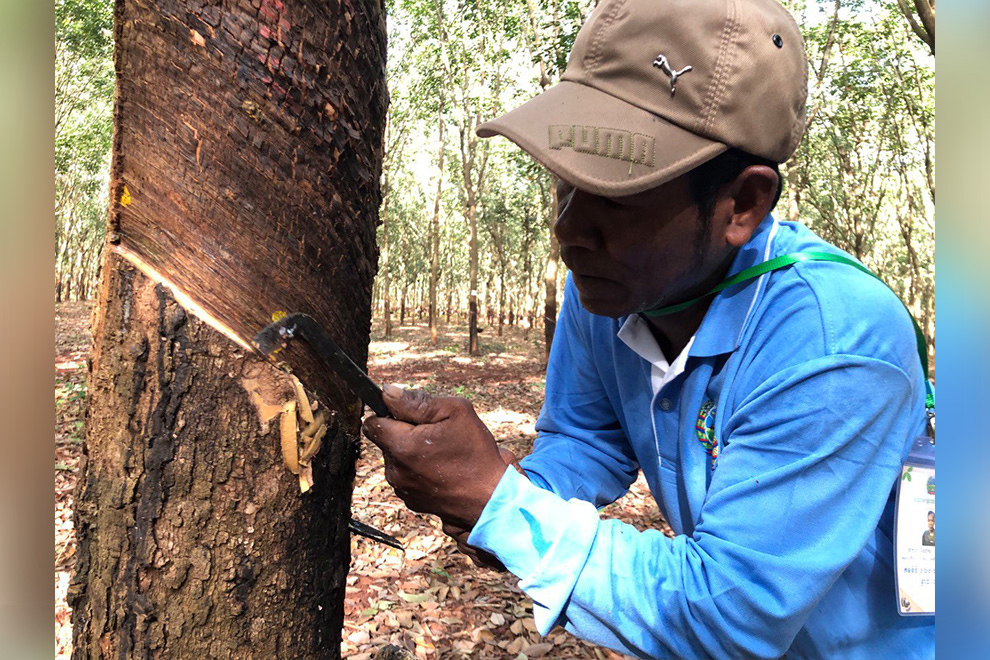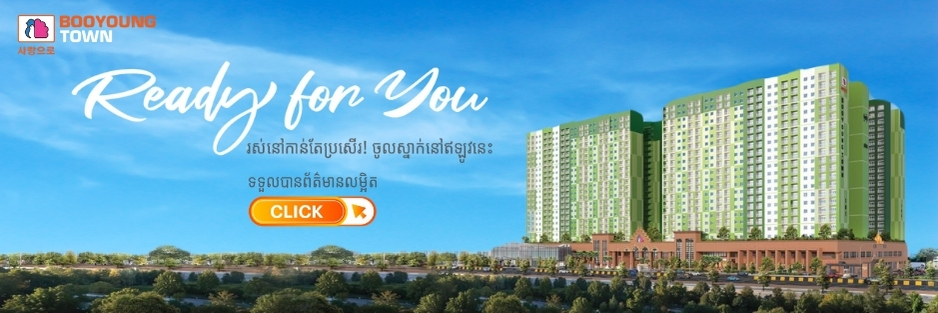
A worker taps a rubber tree for latex at a plantation in Tboung Khmum province, in 2024. Niem Chheng
In the first quarter of the year, Cambodian rubber exports generated over $116 million, an increase of more than 15% compared to the same period in 2024. In addition, demand for rubber latex from local tyre manufacturing factories continues to grow steadily.
A report from the General Directorate of Rubber under the Ministry of Agriculture, Forestry, and Fisheries stated that in Q1 2025, Cambodia earned $116.26 million from rubber exports, a 15.3% increase compared to Q1 2024.
Of the total, rubber latex exports were valued at $114.93 million, while rubberwood earned $1.33 million. In 2024, rubber latex exports were valued at $100.48 million, while rubberwood exports stood at $355,694.
The report also noted that in Q1 2025, the average price of rubber latex was $1,923 per tonne – an increase of $474 or 32.7% compared to the same period in 2024.
Ken Oudomonysinat, CEO of Sailun Tire Cambodia, a tyre manufacturer located in the Sihanoukville Special Economic Zone, told The Post that until just a few years ago, the Kingdom’s rubber industry was almost completely dependent on export orders.
However, the presence of more international companies opening tyre factories in Cambodia has gradually changed this trend.
He believed that due to increasing domestic demand, exports may decrease by as much as half in the near future if no new plantations are established. Oudomonysinat noted that this will likely be offset by increased exports of finished tyres.
“The demand for rubber latex from domestic tyre manufacturers continues to rise. Specifically, in 2025, our factory alone may require about 100,000 tonnes of domestic rubber latex, while other factories may also have similar demands,” he explained.
He also emphasised that in order to ensure sustainability in the export market and meet domestic industry demand, Cambodia may need to expand its rubber plantations. Currently, there are six tyre manufacturing operations in the kingdom, with several more under construction.
According to the rubber directorate, by the end of 2024, Cambodia had 425,443 hectares of rubber plantations, an increase from the 407,172 hectares of 2023. Of the total, 330,259 hectares (or 77.63%) were tapped for latex production, while 95,184 hectares (or 22.37%) were under maintenance.
Out of the total rubber plantation area, 223,122 hectares (or 52.44%) were agro-industrial plantations, while 202,321 hectares (or 47.56%) were family-owned plantations.
In 2024, Cambodia’s total revenue from the export of rubber latex and rubberwood reached $671.68 million, a 36.48% increase over 2023. Revenue from rubber latex exports totalled $666.25 million, while rubberwood exports earned $5.4 million.
Cambodia exported 338,000 tonnes of rubber latex in 2024, a decrease of 30,048 tons or 8.16% compared to 2023. Rubberwood exports totaled 25,157 cubic metres.











